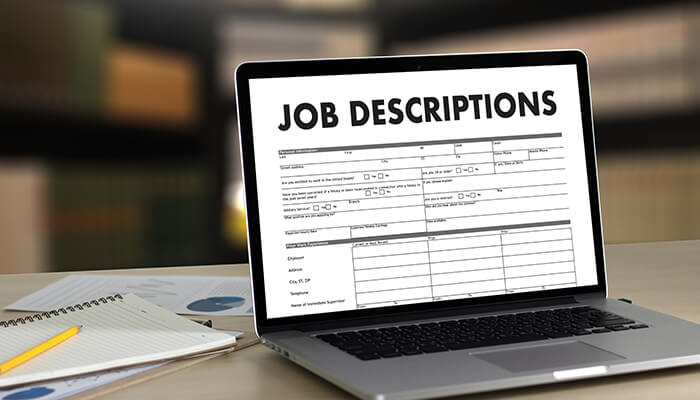As a hiring manager or HR professional, crafting a job description is a crucial step in attracting the right candidates to your organization. A well-written job description not only helps to set expectations for the role but also serves as a marketing tool for your company. Using a template can be a helpful starting point when creating a job description, but it’s important to know how to tailor the template to your specific needs. Here are some top tips for writing a professional job description using a template.
1. Start with a clear job title and summary
The job title and summary are the first things a candidate will see, so it’s crucial to make them clear and concise. Use the job title to convey the main objective of the role, and the summary to provide a brief overview of the position’s responsibilities and qualifications. This will help to attract the attention of qualified candidates who are searching for jobs that align with their skills and experience.
2. Use bullet points to highlight key responsibilities
Bullet points are an effective way to break down the job responsibilities into easily digestible chunks. Use them to highlight the most important and specific tasks that the candidate will be responsible for. This will help to convey the expectations for the role and provide a clear understanding of what the candidate will be doing on a day-to-day basis.
3. Be specific about required qualifications
When outlining the required qualifications, it’s important to be specific to avoid confusion and ensure that the right candidates apply. Include details such as the required education or certifications, years of experience, and any specific skills or qualities that are essential for the role. This will help to attract candidates who meet the criteria and avoid wasting time on unqualified applicants.
4. Include information about company culture and values
A job description is not just about the role and responsibilities, but also about the company culture and values. Including information about the company’s mission, values, and culture will give candidates a sense of what it’s like to work for the organization. This can be a powerful tool in attracting candidates who align with the company’s culture and values.
5. Use inclusive language
Using inclusive language in a job description is important to attract a diverse range of candidates. Avoid using words or phrases that may be off-putting or discriminatory. Instead, use neutral language that is inclusive of all genders, races, and backgrounds. This will help to create a welcoming and inclusive workplace culture.
6. Keep it concise
A job description should be concise and to the point. Avoid using overly complicated language or unnecessary jargon. Keep the sentences short and easy to read, and use bullet points to break up large blocks of text. This will help to ensure that the job description is easy to understand and will attract the right candidates.
7. Use active verbs
Using active verbs in a job description will help to convey a sense of action and urgency. Use verbs such as “manage,” “develop,” “create,” and “implement” to describe the responsibilities of the role. This will help to convey the expectations for the role and provide a clear understanding of what the candidate will be doing on a day-to-day basis.
8. Include information about salary and benefits
While not always necessary, including information about the salary and benefits can be a helpful tool in attracting the right candidates. Candidates want to know what they can expect in terms of compensation and benefits, so including this information can help to set expectations and attract the right candidates.
9. Use a call to action
A job description should end with a call to action that encourages candidates to apply. Use a clear and concise statement that encourages candidates to submit their resume or apply online. This will help to ensure that the right candidates apply and will make it easier for you to find the right fit for the role.
Conclusion
In conclusion, writing a professional job description using a template can be a helpful starting point in attracting the right candidates to your organization. However, it’s important to tailor the template to your specific needs and ensure that it accurately conveys the expectations for the role. By following these top tips, you can create a job description that attracts the right candidates and helps to set expectations for the role.




